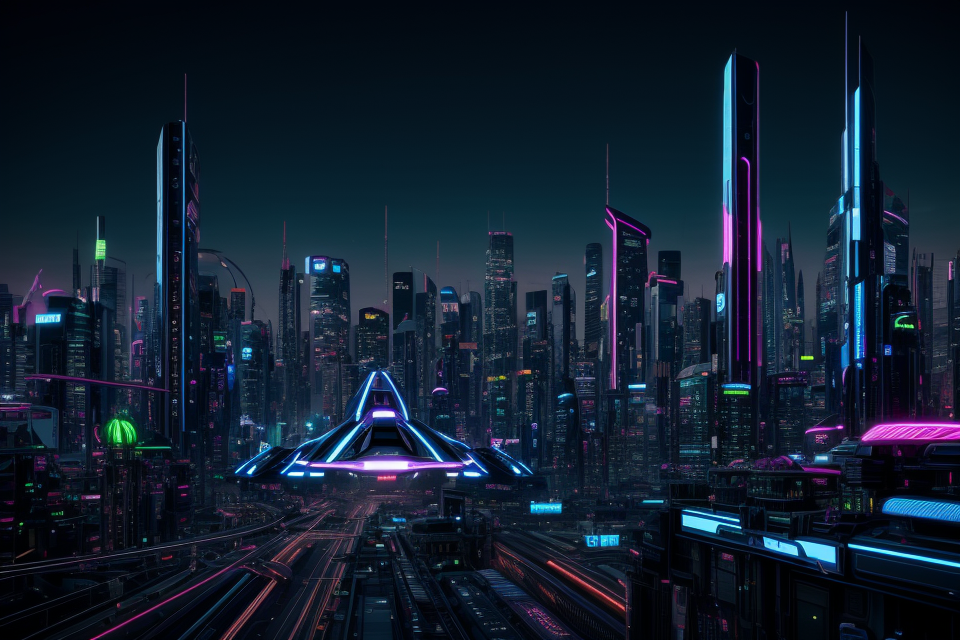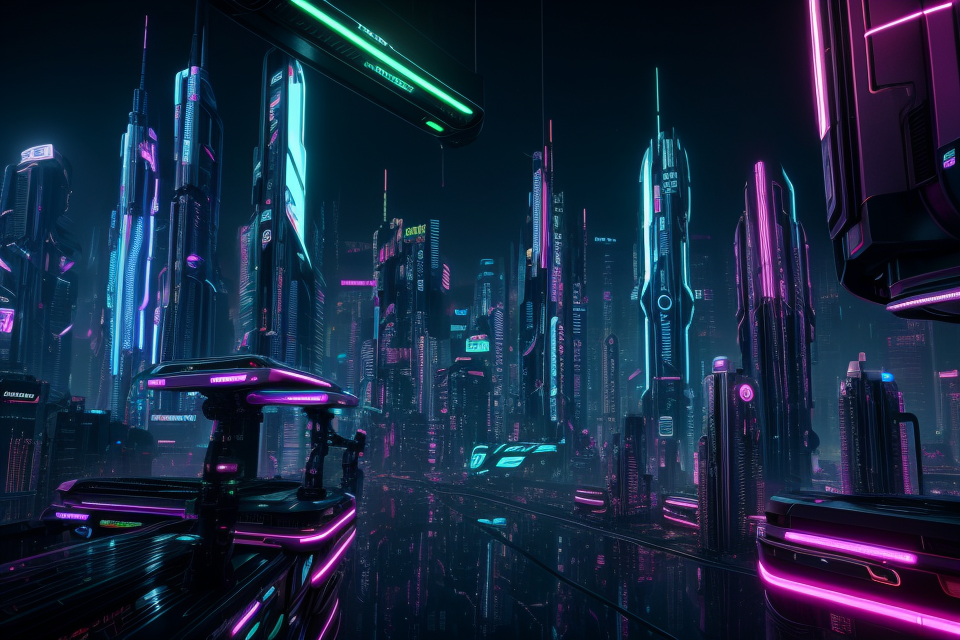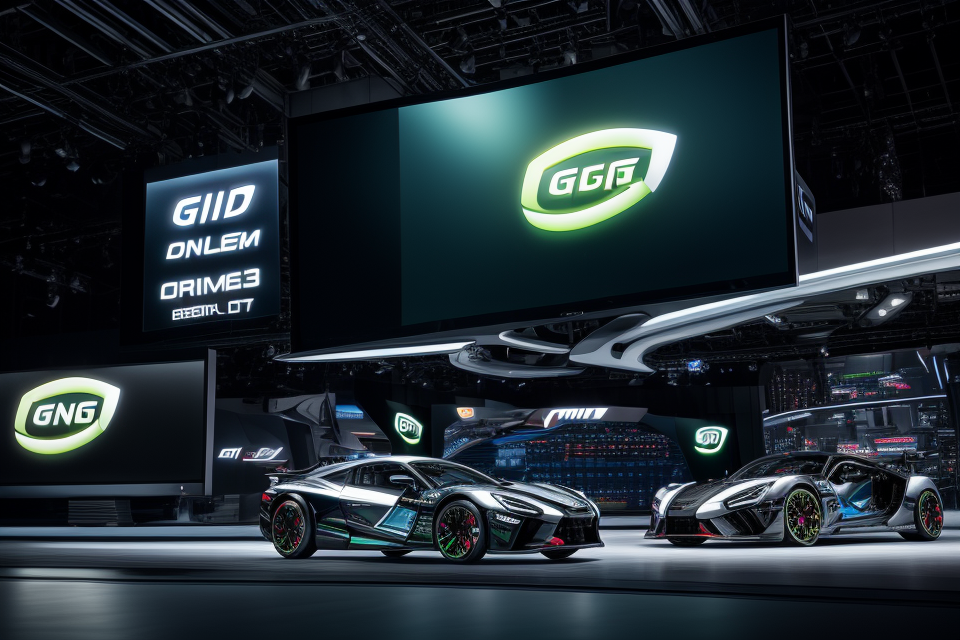
Are you tired of your current graphics card struggling to keep up with the latest games and software? Look no further! In this article, we’ll dive into the world of graphics cards and explore the latest and greatest options on the market. From NVIDIA to AMD, we’ll take a closer look at the top contenders and what sets them apart. Whether you’re a hardcore gamer or a professional in need of serious graphical power, we’ve got you covered. So sit back, relax, and get ready to upgrade your graphics game.
The next big thing in graphics cards is likely to be the continued development of more powerful and efficient GPUs. This includes the use of new manufacturing processes, such as 7nm and 5nm, to create smaller and more power-efficient chips. Additionally, there is a growing trend towards the use of specialized AI accelerators, such as Tensor Processing Units (TPUs), to improve the performance of machine learning and AI applications. Another development is the increased focus on real-time ray tracing, which is a technique that allows for more realistic lighting and shadows in video games and other graphics-intensive applications. Overall, the next big thing in graphics cards is likely to be a combination of improved performance, power efficiency, and specialized capabilities to meet the demands of modern applications.
The Evolution of Graphics Cards
The Emergence of 3D Graphics
The Rise of Gaming and Cinematic Experiences
The gaming industry has seen tremendous growth in recent years, with a surge in the popularity of console and PC games. The increasing demand for more immersive and realistic gaming experiences led to the development of advanced 3D graphics technologies. 3D graphics enabled game designers to create more detailed and visually appealing environments, allowing players to feel like they were truly part of the game world.
In addition to gaming, the rise of cinematic experiences in movies and television also played a significant role in the emergence of 3D graphics. As movie-goers became accustomed to seeing stunning visual effects and immersive storytelling, the demand for similar experiences in other mediums grew. This led to the development of advanced graphics processing capabilities that could handle the demands of 3D graphics in both gaming and cinematic environments.
The Need for Advanced Graphics Processing
As 3D graphics became more prevalent, the need for advanced graphics processing capabilities became increasingly apparent. Graphics processing units (GPUs) were developed to handle the complex calculations required for 3D graphics rendering, allowing for smoother frame rates and more realistic visuals. GPUs quickly became an essential component in modern computer systems, enabling users to experience the full potential of 3D graphics technology.
Further advancements in GPU technology have led to the development of new features and capabilities, such as real-time ray tracing and artificial intelligence-driven graphics enhancements. These technologies are now being integrated into the latest graphics cards, providing users with even more realistic and immersive visual experiences. As the demand for more advanced graphics processing continues to grow, it is likely that we will see even more innovative developments in graphics card technology in the coming years.
The Battle for Performance and Efficiency
The War of the Graphic Processing Units (GPUs)
In the world of graphics cards, the war of the Graphic Processing Units (GPUs) is an ongoing battle between major players such as NVIDIA and AMD. These companies strive to produce the most powerful and efficient GPUs for gamers, content creators, and professionals alike.
The battle began with the release of the first 3D graphics accelerator cards in the 1990s, and since then, the competition has only intensified. Manufacturers constantly update their GPU architectures, adding new features and increasing performance. As a result, users can expect better graphics, smoother frame rates, and more realistic visuals in their games and applications.
One of the most significant advancements in GPU technology has been the development of programmable shaders. These allow developers to create more sophisticated and visually stunning effects by enabling them to write custom code that runs on the GPU. This has opened up new possibilities for game designers and artists, leading to a new era of realistic graphics and immersive gaming experiences.
The Quest for Better Cooling Solutions
Another critical aspect of the battle for performance and efficiency is the quest for better cooling solutions. Graphics cards generate a significant amount of heat during operation, which can negatively impact their performance and lifespan. To address this issue, manufacturers have developed innovative cooling technologies, such as liquid cooling systems and advanced air cooling designs.
Liquid cooling systems use a liquid coolant to transfer heat away from the GPU, offering more efficient cooling and quieter operation compared to traditional air cooling solutions. Some manufacturers have even implemented dual-chamber designs, which separate the hot and cold sections of the card, allowing for even better thermal management.
Additionally, some GPUs are designed with a factory overclock, which allows them to run at higher clock speeds out of the box. This gives users a performance boost right away without the need for any additional overclocking efforts.
In conclusion, the battle for performance and efficiency in graphics cards is an ongoing quest for manufacturers to provide users with the best possible experience. Advancements in GPU architectures, programmable shaders, and cooling solutions continue to push the boundaries of what is possible in graphics and gaming technology.
The Future of Graphics Cards
Advancements in Technology
Ray Tracing and Realism
- The next big thing in graphics cards is expected to be the advancement in ray tracing technology.
- Ray tracing is a technique used to simulate the behavior of light in a virtual environment, creating more realistic lighting and shadows.
- This technology has already been implemented in some games and professional visualization software, but is expected to become more widespread in the future.
Artificial Intelligence (AI) and Machine Learning
- Another area of focus for the future of graphics cards is the integration of artificial intelligence (AI) and machine learning.
- AI and machine learning can be used to optimize graphics rendering, making it faster and more efficient.
- This can also enable new features such as dynamic adjustment of graphics settings based on the task at hand.
The Impact on Different Industries
Gaming
- The gaming industry is expected to be heavily impacted by the next generation of graphics cards.
- With the increased realism and faster rendering provided by advancements in ray tracing and AI, games are expected to become more immersive and engaging.
- This could lead to a higher demand for more powerful graphics cards, driving innovation and competition in the industry.
Professional Visualization
- The professional visualization industry, which includes fields such as architecture, engineering, and medical imaging, is also expected to benefit from the next generation of graphics cards.
- Advancements in ray tracing and AI can enable more realistic and accurate simulations, which can aid in decision-making and design.
- This could lead to increased demand for high-end graphics cards in this industry.
Cryptocurrency Mining
- The next generation of graphics cards may also have an impact on the cryptocurrency mining industry.
- With the increasing value of some cryptocurrencies, there has been a surge in demand for powerful graphics cards for mining.
- However, the integration of AI and machine learning in graphics cards may make them less attractive for mining, as they may become less efficient for this purpose.
Overall, the future of graphics cards is expected to be driven by advancements in ray tracing, AI, and machine learning. These technologies have the potential to revolutionize the gaming, professional visualization, and cryptocurrency mining industries, among others. As these technologies continue to develop, it will be interesting to see how they shape the future of graphics cards and their impact on various industries.
Making the Right Choice
Assessing Your Needs
Gaming Requirements
When assessing your needs for a graphics card, it is important to consider your gaming requirements. If you are an avid gamer, you will want a graphics card that can handle the latest games with high graphics settings. Look for a card with a high number of CUDA cores, high memory bandwidth, and a fast clock speed. Some popular gaming graphics cards include NVIDIA’s GeForce RTX 3080 and AMD’s Radeon RX 6800 XT.
Professional Applications
If you use your computer for professional applications such as video editing, 3D modeling, or graphic design, you will need a graphics card that can handle the demands of these applications. Look for a card with a high number of CUDA cores, high memory bandwidth, and a fast clock speed. Some popular professional graphics cards include NVIDIA’s Quadro RTX 8000 and AMD’s Radeon Pro WX 8400.
Cryptocurrency Mining Potential
Another factor to consider when assessing your needs for a graphics card is its potential for cryptocurrency mining. Some graphics cards are better suited for mining than others, and if you plan on using your card for this purpose, you will want to choose one with a high hash rate and low power consumption. Some popular graphics cards for cryptocurrency mining include NVIDIA’s GeForce GTX 1660 Super and AMD’s Radeon RX 5700 XT.
Deciding on a Budget
When it comes to purchasing a graphics card, one of the most important factors to consider is your budget. Graphics cards can range from cost-effective options that are perfect for casual gaming and basic graphics processing to high-end performance cards that are designed for demanding applications such as gaming, video editing, and professional graphics work.
Cost-Effective Options
If you are on a tight budget, there are several cost-effective graphics card options available that can still provide good performance for casual gaming and basic graphics processing tasks. These cards are typically more affordable and do not require a large investment, making them an attractive option for those who are looking to save money.
Some popular cost-effective graphics card options include the NVIDIA GeForce GTX 1660 Super and the AMD Radeon RX 580. These cards offer good performance at an affordable price point and are suitable for playing older games and running basic graphics applications.
High-End Performance
On the other hand, if you are looking for high-end performance, there are several graphics card options available that can deliver exceptional performance for demanding applications such as gaming, video editing, and professional graphics work. These cards are typically more expensive, but they offer advanced features and performance that are unmatched by lower-end options.
Some popular high-end graphics card options include the NVIDIA GeForce RTX 3080 and the AMD Radeon RX 6800 XT. These cards offer advanced features such as real-time ray tracing, advanced AI acceleration, and exceptional performance, making them ideal for demanding applications.
When deciding on a budget, it is important to consider your specific needs and requirements. If you are a casual gamer or use your graphics card for basic tasks, a cost-effective option may be sufficient. However, if you are a professional graphics designer or avid gamer who demands the best performance, a high-end graphics card may be necessary.
Ultimately, deciding on a budget will depend on your individual needs and preferences. By considering your budget and the specific requirements of your graphics card, you can make an informed decision that will meet your needs and provide the best value for your investment.
Staying Ahead of the Curve
In order to make the right choice when it comes to graphics cards, it is important to stay ahead of the curve. This means keeping up with the latest trends and developments in the world of graphics cards, as well as monitoring reviews and other sources of information to determine which cards are the best investment.
Here are some tips for staying ahead of the curve:
Monitoring Trends and Reviews
One of the best ways to stay ahead of the curve is to monitor trends and reviews. This means keeping an eye on websites and forums that cover the latest developments in the world of graphics cards, as well as reading reviews from trusted sources to determine which cards are the best investment. By staying up to date on the latest trends and developments, you can make informed decisions when it comes to purchasing a graphics card.
Upgrading Sensibly
Another important aspect of staying ahead of the curve is upgrading sensibly. This means considering factors such as your budget, the specific needs of your system, and the potential resale value of a graphics card before making a purchase. By upgrading sensibly, you can ensure that you are getting the most out of your investment, and that you are making the right choice when it comes to selecting a graphics card.
The Exciting Future of Graphics Cards
New Features and Technologies
As the graphics card market continues to evolve, so too do the features and technologies associated with them. One of the most exciting developments in recent years has been the emergence of real-time ray tracing, which allows for more realistic lighting and shadows in video games and other graphics-intensive applications. Additionally, advancements in machine learning and AI are enabling graphics cards to become more intelligent, allowing them to automatically optimize performance and reduce latency.
Opportunities for Innovation
Another area of opportunity for innovation in graphics cards is in the realm of virtual reality (VR) and augmented reality (AR). As these technologies become more prevalent, the demand for graphics cards that can handle the increased processing requirements will only continue to grow. Additionally, the rise of cloud gaming and streaming services presents new opportunities for graphics card manufacturers to develop products that can deliver high-quality gaming experiences over the internet.
Continuing the Quest for Superior Graphics
Ultimately, the goal of graphics card manufacturers is to continue pushing the boundaries of what is possible in terms of visual fidelity and realism. This means developing new technologies and features that can enhance the graphics experience for users, whether they are playing the latest video games or using graphics-intensive applications for work or entertainment. As such, the future of graphics cards is likely to be defined by a relentless pursuit of superior graphics and an unwavering commitment to innovation.
FAQs
1. What is a graphics card?
A graphics card, also known as a video card or display card, is a hardware component that is responsible for rendering images and videos on a computer screen. It is a separate component from the CPU and is designed to offload the graphics processing workload from the CPU, allowing it to perform other tasks more efficiently.
2. What are the benefits of having a high-end graphics card?
A high-end graphics card can provide several benefits, including faster frame rates, smoother animations, and higher resolutions. It can also enable you to play games at higher settings and with improved graphics quality. Additionally, a high-end graphics card can be useful for tasks such as video editing, 3D modeling, and other graphics-intensive applications.
3. What are some popular graphics card brands?
Some popular graphics card brands include NVIDIA, AMD, and Intel. These brands offer a range of products at different price points and performance levels, so it’s important to do your research and choose a card that meets your needs and budget.
4. How do I know if my current graphics card is outdated?
If your current graphics card is several years old, it may not be able to handle the latest games and applications. Additionally, if you notice slow frame rates, stuttering, or other performance issues, it may be time to upgrade your graphics card.
5. What is the next big thing in graphics cards?
The next big thing in graphics cards is likely to be the integration of artificial intelligence (AI) and machine learning (ML) technologies. These technologies can improve the performance and efficiency of graphics cards, enabling them to handle more complex tasks and deliver even better graphics quality. Additionally, the continued development of 3D and virtual reality (VR) technologies will likely drive the demand for more powerful graphics cards.


